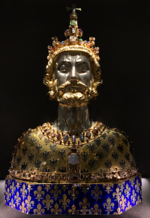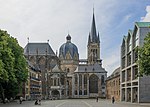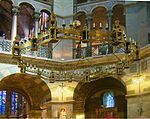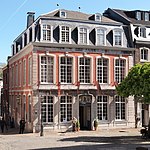Karlsschrein
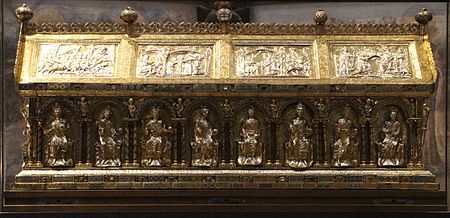
The Karlsschrein (English: Shrine of Charlemagne) is located in Aachen Cathedral and contains the remains of Charlemagne. It was completed in 1215 in Aachen at the command of Frederick II, Holy Roman Emperor. Previously, Charlemagne's remains had been in the Palatine Chapel part of the cathedral until 1165, when Frederick Barbarossa placed the remains in a sarcophagus beneath the floor of the cathedral. Frederick II personally carried out the transfer of the bones and the sealing of the shrine on 27 July 1215, the first anniversary of the Battle of Bouvines, which had spurred him to seek the German throne. Two days before, he had been crowned again and finally as the King of the Romans at Aachen.
Excerpt from the Wikipedia article Karlsschrein (License: CC BY-SA 3.0, Authors, Images).Karlsschrein
Domhof, Aachen Burtscheid (Aachen-Mitte)
Geographical coordinates (GPS) Address Phone number Website Nearby Places Show on map
Geographical coordinates (GPS)
| Latitude | Longitude |
|---|---|
| N 50.7747 ° | E 6.0844 ° |
Address
Aachener Dom
Domhof 1
52062 Aachen, Burtscheid (Aachen-Mitte)
North Rhine-Westphalia, Germany
Open on Google Maps



